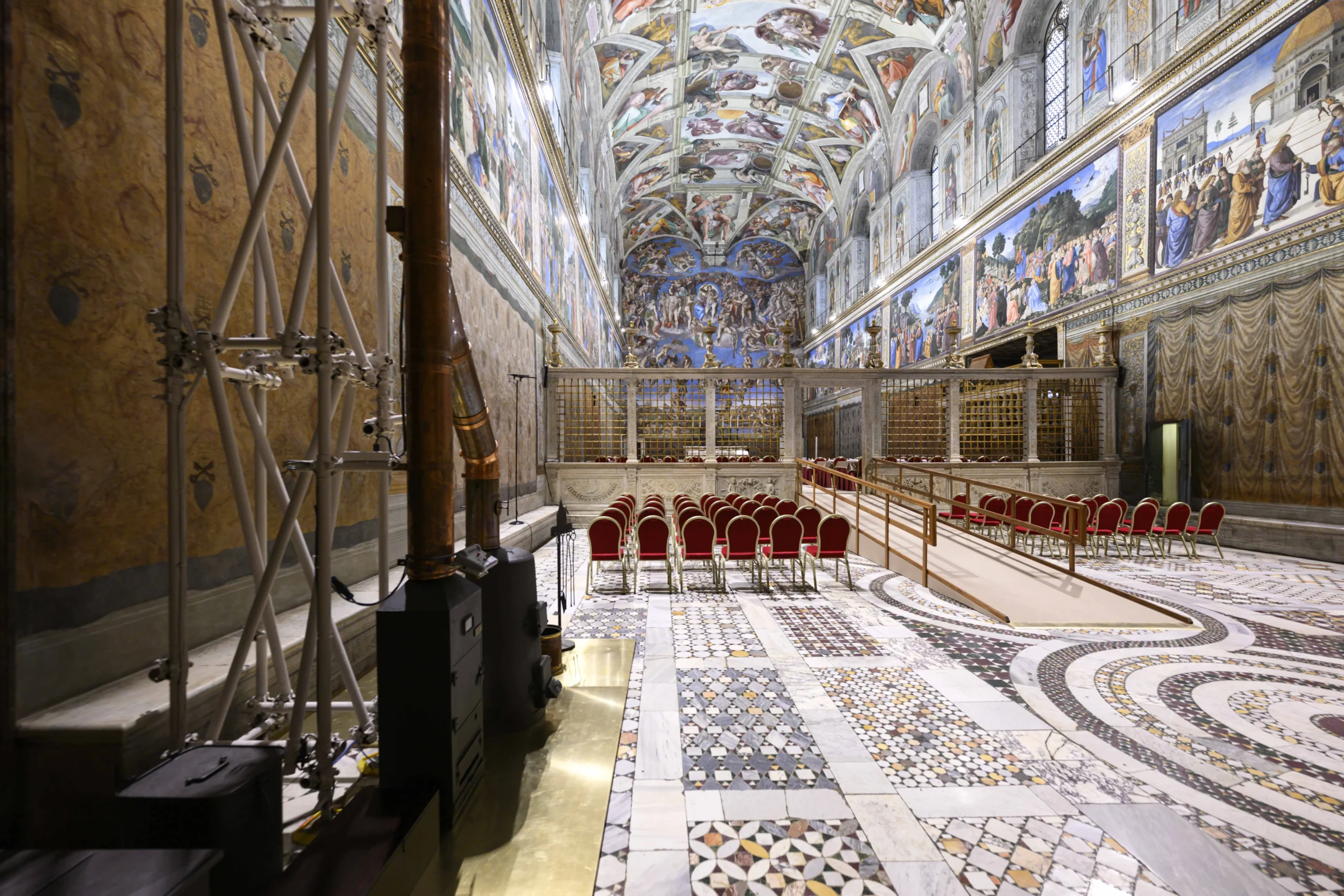VATICAN CITY — Red curtains are hung on the balcony of St. Peter’s Basilica. The Sistine Chapel is furnished with tables, ballots, pens, and vote-counting equipment. The Room of Tears is prepped with fresh, white papal vestments in sizes suitable for any possible pontiff.
In less than 24 hours, voting-age members of the College of Cardinals will be forced to stand in front of Michelangelo’s rendition of The Last Judgment and recite an oath to God that the name on the ballot they are about to cast is who they sincerely believe should lead the Catholic Church.
The conclave is imminent, but the cardinals are more discordant than ever. They’ve been meeting for weeks, but no slam-dunk candidates have emerged in the pre-election discussions.
Many of the papabile touted as major contenders are hitting the ceiling of their support without the numbers necessary to clinch the papal tiara.

Each papabile is flush with supporters, but to become pope requires a two-thirds majority vote. In this conclave, that means 89 ballots — a grueling goal to reach amid a college so divided on matters spiritual and temporal.
Cardinal Pietro Parolin, the Vatican Secretary of State under Pope Francis, remains the man to beat, but the movement behind him is losing momentum. He oversaw the Holy See’s widely panned deal with the Chinese Communist Party that allowed the regime to play a role in selecting bishops within its borders.
Just days after the death of Pope Francis, seeing an empty throne, the CCP unilaterally appointed a bishop without approval from the Holy See. It is an embarrassing situation for Parolin, and it seems to have rattled some would-be supporters.
A similar sluggishness is plaguing the bloc hoping to install Cardinal Luis Tagle from the Philippines. The charismatic and progressive prelate enjoyed massive support from the public following Francis’s death, but concerns over his alleged mismanagement of Vatican relief charity Caritas Internationalis have proved damaging.
The Tagle contingent is reportedly considering Cardinal Robert Francis Prevost, an American-born Augustinian with extensive missionary experience in Peru, as an alternative. It is yet to be seen if his Latin American twist can outweigh his U.S. passport and investment in a religious order, two aspects that might complicate his position.
Cardinal Peter Erdő from Hungary remains the most prominent candidate who sits firmly within the “conservative” camp. He has been considered as a possible successor to Pope Francis for a while, having successfully walked the tightrope of disagreeing with his pontiff while never acting against his obligation of obedience.

The keyword floating the streets of Rome right now is “stability.” The college desires a pope who will neither continue the overhauls implemented by Pope Francis nor radically walk them back.
The former would only further destabilize the Catholic Church. The latter would signal internal confusion and lack of cohesion to the public.
Not everyone is happy with the direction discussions are taking.
Cardinal Oscar Andrés Rodriguez Maradiaga of Honduras allegedly left Rome in a huff earlier this week after becoming frustrated with the number of “turncoats” in the college seeking to slow down the reforms made under Pope Francis. He is too old to vote, and therefore, his departure will not affect the election.
The Sala Stampa, the Holy See press office, released on Tuesday a readout regarding the final general congregation of the College of Cardinals ahead of the conclave.
The memorandum noted that cardinals at the congregation emphasized the need for a pontiff who can unite a world suffering “strong polarization.”

“A central theme of the reflection was that of communion, indicated as an essential vocation for the new Pontiff,” the memo reads. “The profile of a shepherd Pope, a teacher of humanity, capable of embodying the face of a Samaritan Church, close to the needs and wounds of humanity, was outlined. In times marked by wars, violence and strong polarization, a strong need is felt for a spiritual guide who offers mercy, synodality and hope.”
PAPARAZZI AND TOURISTS HUNT FOR STRAY CARDINALS AS PAPAL CONCLAVE FEVER BUILDS
With the end of general congregations and the imminent seclusion of cardinal electors in the Sistine Chapel, Tuesday night will be the final chance for members of the college over 80 to bend the ear of their younger counterparts.

Wednesday afternoon, 133 electors will proceed into the Sistine Chapel, and the doors will be locked behind them. They will not emerge until the next pope is selected and the era of sede vacante comes to an end.
Whether the college is suffering from disunity, as reported, or alliances are being strengthened in secret, with each ballot, members will swear that their vote is uncompromised by outside pressures, reciting in Italian: “I call as my witness Christ the Lord, who will be my judge, that my vote is given to the one whom I believe should be elected according to God.”
